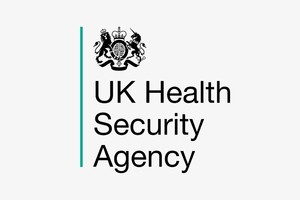REACT-1 study shows COVID-19 infection still high but falling, with high vaccine effectiveness
Full findings from the latest report of the government-backed REACT-1, one of the largest studies into COVID-19 infections in England, have been published today.

The findings from Imperial College London and Ipsos MORI, covering 19 October to 5 November 2021 (round 15 of the study), show prevalence of coronavirus (COVID-19) infections now stands at 1.57%, meaning that around 1 in 64 people is infected with the virus.
This is a fall in infection rates since the publication of an interim report covering 19 to 29 October 2021, which showed prevalence of COVID-19 infections had increased to 1.72 per cent, or around 1 in 58 people overall.
Over the last 3 reports, it was found that those between the ages of 12 to 17 who had a single dose of vaccine were 56% less likely to develop infection than those unvaccinated.
People who have received a booster or third shot are on average around two-thirds less likely to be infected compared to those who have had 2 doses of vaccine. Previous REACT reports have shown that 2 doses reduce infection rates by 60%.
Over 100,000 volunteers in England took part in the study to examine the levels of COVID-19 in the general population between 19 October and 5 November.
Dr Jenny Harries, Chief Executive of the UK Health Security Agency (UKHSA), said:
This round of REACT provides another reminder of the effectiveness of the vaccines against COVID-19. As we approach winter, it is vital that everyone eligible comes forward for their jabs – whether that’s their first dose, second or a booster.
Remember that anyone over 12 years old is now able to receive their first jab, and boosters will soon be offered to everyone over 40. Please do take up that offer to ensure your immunity does not wane.
Nearly 12% of the sequenced positive samples were Delta sublineage AY.4.2., which UKHSA has classified as a Variant Under Investigation (VUI). UKHSA continues to monitor the spread of this variant and investigate the factors underlying its growing prevalence.
The main findings from the report are as follows.
There were 1,399 positives from 100,112 swabs, giving a weighted prevalence of 1.57%.
The current prevalence is close to being two-fold higher than prevalence in the previous full round 14 (9 to 27 Sept 2021), which was 0.83%.
Within the latest round 15, there was a fall in prevalence, with the reproduction rate of the virus (‘R’) estimated at 0.76.
The highest prevalence was found in the South West at 1.97%, increasing almost three-fold from round 14. Round 15 showed an increase in rates over round 14 in most regions.
Highest prevalence was observed in those aged 13 to 17 years at 5.21% and those aged 5 to 12 years at 4.95%.
For those aged 65 to 74 years, prevalence was 0.84%. At 75 years and over it was 0.63% – both representing increases of approximately two-fold from the previous round 14.
To date, 841 positive samples have been sequenced, all of which were Delta variant. Of these, 99 (11.8%) were the AY.4.2 Delta sublineage, which has been classified by UKHSA as a VUI.
In rounds 13 to 15, children (ages 12 to 17) were 56% less likely to develop infection compared to an unvaccinated child, rising to 67.5% for symptomatic infection.
Professor Paul Elliott, director of the REACT programme from Imperial’s School of Public Health, said:
Although hospitalisations and deaths remain lower than previous peaks, the data shows that infections across the country remain very high. A higher rate of prevalence was recorded at most ages and most regions of the country compared to data from a month earlier, most notably in school-aged children.
The rate of prevalence has steadily declined throughout round 15 reporting, but an overall figure of 1.57 per cent is still nearly two-fold higher than that recorded in the previous round.
It is possible that the prevalence rate could rise once again now that children have returned to school following half-term, though this could be at least partially offset by as many people as possible having booster jabs when offered and those aged 12 years or over having the vaccine.
Kelly Beaver, CEO at Ipsos MORI, said:
The high prevalence found in this round of REACT reminds us all of the importance of remaining vigilant, while the data on booster jabs is an important reminder to everyone to get their booster jab when it’s made available to them to ensure the best protection against COVID-19.
The REACT-1 study was commissioned by the Department of Health and Social Care and is carried out by a world-class team of scientists, clinicians and researchers at Imperial College London, Imperial College Healthcare NHS Trust and Ipsos MORI.
UKHSA estimates that the vaccination programme in England has prevented hundreds of thousands of hospitalisations and deaths. It is easier than ever to get vaccinated, and the vaccination programme has been successful in weakening the link between infection, hospitalisation and deaths.